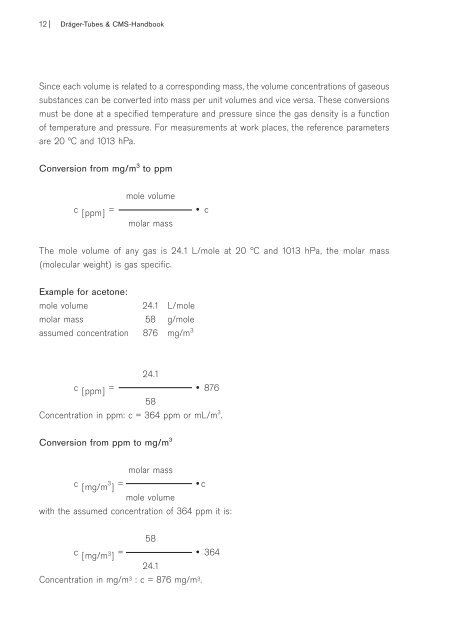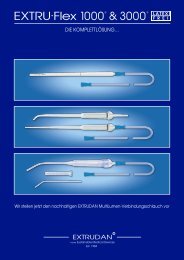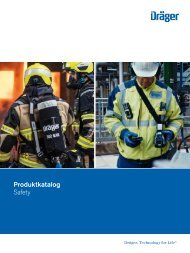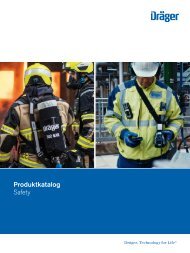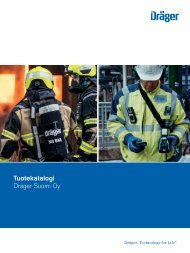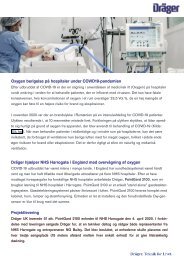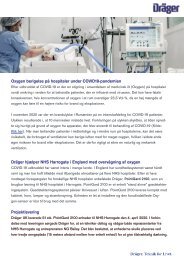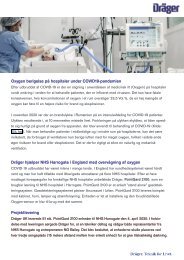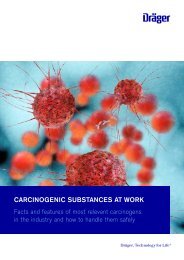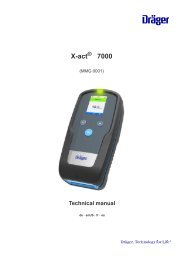Create successful ePaper yourself
Turn your PDF publications into a flip-book with our unique Google optimized e-Paper software.
12| Dräger-<strong>Tubes</strong> & CMS-<strong>Handbook</strong><br />
Since each volume is related to a corresponding mass, the volume concentrations of gaseous<br />
substances can be converted into mass per unit volumes and vice versa. These conversions<br />
must be done at a specified temperature and pressure since the gas density is a function<br />
of temperature and pressure. For measurements at work places, the reference parameters<br />
are 20 °C and 1013 hPa.<br />
Conversion from mg/m 3 to ppm<br />
c [ppm] =<br />
mole volume<br />
molar mass<br />
• c<br />
The mole volume of any gas is 24.1 L/mole at 20 °C and 1013 hPa, the molar mass<br />
(molecular weight) is gas specific.<br />
Example for acetone:<br />
mole volume<br />
24.1 L/mole<br />
molar mass 58 g/mole<br />
assumed concentration 876 mg/m 3<br />
24.1<br />
c [ppm] = • 876<br />
58<br />
Concentration in ppm: c = 364 ppm or mL/m 3 .<br />
Conversion from ppm to mg/m 3<br />
molar mass<br />
c [mg/m 3 ] =<br />
•c<br />
mole volume<br />
with the assumed concentration of 364 ppm it is:<br />
58<br />
c [mg/m3 ] = • 364<br />
24.1<br />
Concentration in mg/m 3 : c = 876 mg/m 3 .


